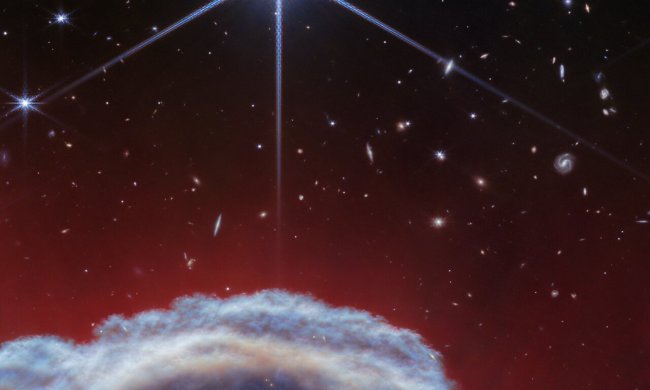Astronomers using the James Webb Space Telescope have modeled the weather on a distant exoplanet, revealing winds whipping around the planet at speeds of 5,000 miles per hour.
Researchers looked at exoplanet WASP-43 b, located 280 light-years away. It is a type of exoplanet called a hot Jupiter that is a similar size and mass to Jupiter, but orbits much closer to its star at just 1.3 million miles away, far closer than Mercury is to the sun. It is so close to its star that gravity holds it in place, with one side always facing the star and the other always facing out into space, so that one side (called the dayside) is burning hot and the other side (called the nightside) is much cooler. This temperature difference creates epic winds that whip around the planet’s equator.

“With Hubble, we could clearly see that there is water vapor on the dayside. Both Hubble and Spitzer suggested there might be clouds on the nightside,” explained the lead author of the research, Taylor Bell of the Bay Area Environmental Research Institute, in a statement. “But we needed more precise measurements from Webb to really begin mapping the temperature, cloud cover, winds, and more detailed atmospheric composition all the way around the planet.”
The researchers used Webb’s MIRI instrument to observe the differing temperatures across the planet, which average 2,300 degrees Fahrenheit (1,250 degrees Celsius) on the dayside compared to 1,100 degrees Fahrenheit (600 degrees Celsius) on the nightside. “The fact that we can map temperature in this way is a real testament to Webb’s sensitivity and stability,” said Michael Roman, a co-author from the University of Leicester in the U.K.
The researchers were also able to use the data to measure water vapor and methane around the planet, which helps them learn about the positions and thickness of clouds in the atmosphere. Although the researchers did see water vapor on both the dayside and the nightside of the planet, surprisingly, they didn’t see any methane.
“The fact that we don’t see methane tells us that WASP-43 b must have wind speeds reaching something like 5,000 miles per hour,” said co-author Joanna Barstow of the Open University in the U.K.. “If winds move gas around from the dayside to the nightside and back again fast enough, there isn’t enough time for the expected chemical reactions to produce detectable amounts of methane on the nightside.”
The research is published in Nature Astronomy.



